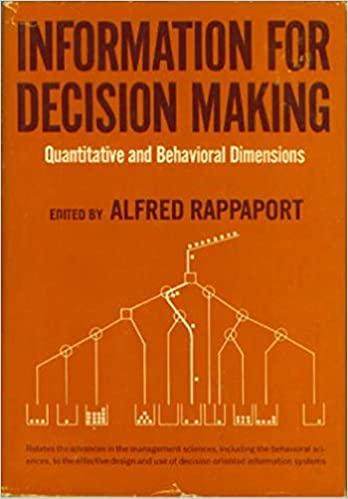Answered step by step
Verified Expert Solution
Question
1 Approved Answer
What creates a book - tax difference that must be reconciled on a Schedule M - 1 or Schedule M - 3 for a corporation?
What creates a booktax difference that must be reconciled on a Schedule M or Schedule M for a corporation?
Salaries paid to shareholder employees
Bonuses paid to employees
Meal expenses incurred in a lunch meeting during which business is directly discussed
Bad debt expense when the corporation used the direct writeoff method for book accounting purposes.
A corporation has taxable income of $ including taxexempt interest of $ It has federal income tax liability of $ and nondeductible penalties paid to the Securities and Exchange Commission of $
What are the firm's earnings and profits?
$
$
$
$
A calendar ear corporation has $ of current earnings and profits and $ of accumulated earnings and profits, as of January
The corporation distributes $ to its sole shareholder.
How much dividend income should this shareholder recognize?
$
$
$
$
A sole individual shareholder in Company A has a stock basis at the beginning of the year of $ Company A has current earnings and profits of $ and a $ deficit in accumulated earnings and profits. Company A distributes $ to the shareholder on the last day of the year.
How much capital gain should this shareholder recognize from the distribution?
$O
$
$
$
A corporation is giving its shareholders a distribution of $ per share or one additional share of stock for every five shares that the shareholders currently own
Is this a taxable distribution under current tax law, and how does this affect the ownership?
It is not a taxable distribution, and the distribution amount is based on proportional ownership interests.
It is a taxable distribution, and the distribution amount is not based on proportional ownership interests.
It is a taxable distribution and has the potential to change the ownership structure of the corporation.
It is not a taxable distribution and has the potential to change the ownership structure of the corporation.
How are a corporation's earnings and profits E&P adjusted when a redemption is treated as a distribution?
The current E&P is reduced by the cash distributed and the fair market value FMV of the other property distributed.
Then accumulated E&P is reduced by the cash distributed and the greater of the fair market value FM of the adjusted tax basis
The accumulated E&P is reduced by the cash distributed and the fair market value FMV of the other property distributed
The current E&P is reduced by the cash distributed and the greater of the fair market value FMV or adjusted tax basis of the other property distributed.
What is one of the three requirements to be able to treat a distribution as substantially disproportionate?
The shareholder's percentage ownership of voting stock after the redemption is less than of their percentage ownership before the redemption.
Immediately after the exchange, the shareholder owns less than of the total combined voting power of all classes of stock entitled to vote.
The shareholder's percentage ownership of the aggregate fair market value of the corporation's common stock after the redemption is less far of their percentage ownership before the redemption.
Immediately after the exchange, the shareholder owns less than of the total combined voting power of all classes of stock entitled to vote.
When does the complete liquidation of a corporation occur?
When a corporation discontinues to do business due to product failure.
When a corporation declares bankruptcy after a major customer declared bankruptcy.
When a corporation acquires all of its stock, after which it ceases to do business.
When a corporation terminates one of several businesses.
What is an advantage of an S corporation?
The corporation's income is not split among family members.
The corporation is exempt from corporate income tax.
The corporation's earnings are not taxed as net passive income.
The corporation's earnings are taxed to the shareholders.
What is a disadvantage of an S corporation?
The corporation is not exempt from corporate income tax.
The corporation is not treated as a separate tax entity from its shareholders.
The corporation cannot split income among family members
The corporation is subject to the personal holding company tax.
What is a disadvantage of using equity in a corporation's capital structure?
The corporation cannot deduct interest payments on debt.
Dividends cannot be deducted from the corporation's taxable income.
Shareholders will not recognize income in a debt retirement.
Common and preferred stock is distributed to common shareholders.
Step by Step Solution
There are 3 Steps involved in it
Step: 1

Get Instant Access to Expert-Tailored Solutions
See step-by-step solutions with expert insights and AI powered tools for academic success
Step: 2

Step: 3

Ace Your Homework with AI
Get the answers you need in no time with our AI-driven, step-by-step assistance
Get Started


